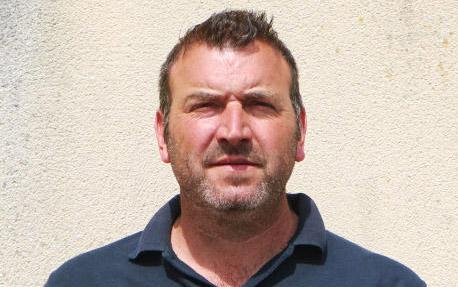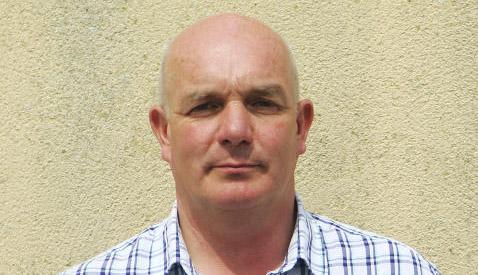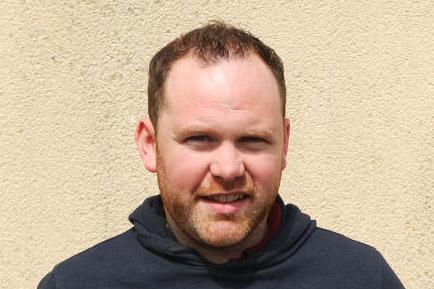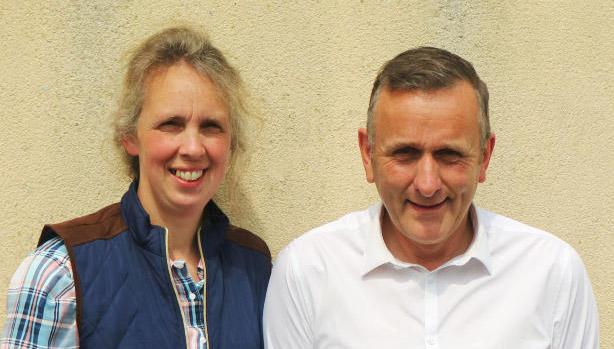The farmers in the Northern Ireland Sheep Programme have been busy in recent months progressing the finalisation of farm plans and highlighting short, medium and longer-term goals.
Programme adviser Senan White also reports farm health planning has ramped up, with participants meeting their private veterinary practitioners while scanning is also taking place across the flocks for OPA. Regular coverage of farmers in the programme is commencing and this week we introduce four of the lowland producers.

Cookstown, Dungannon, Co Tyrone.
Farm system: Mid-season lambing and suckler-to-beef/store enterprises.
Land type: Mixture of dry and heavier-type ground.
Mark Davidson runs a mixed mid-season lambing ewe flock of approximately 280 head and a 35-cow suckler-to-beef / store enterprise on 56ha a short distance outside Dungannon, Co Tyrone. Land type is a mixture of relatively dry ground and some lower-lying land that runs alongside a river and is prone to flooding.
The sheep and beef systems complement each other in this regard, with sheep utilising the heavier ground in the shoulders of the year. Ewes lamb in two batches, with about 100 ewes lambing ahead of the main mid-season flock to make best use of available facilities and spread the labour input required with calving and lambing.
One of Mark’s big aims is to get more from grass and in particular to improve grazing infrastructure. It is a significant task but one Mark can see will deliver major benefits in enhancing animal performance and hopefully increasing the ratio of lambs sold as slaughter fit as opposed to quality stores.
The sheep system has been in transition in the last few years from a terminal breeding policy to incorporating more maternal genetics, with Belclare sires used for one generation cross. Mark collects significant records at birth and uses this information to provisionally select replacements from the best performing ewes in the flock.
Finally, he is also committed to strengthening the flocks health policy and also investigating if there are any so-called iceberg diseases present.

Bellanaleck, Co Fermanagh
Farm system: Mid-season lambing and dairy contract-rearing enterprise.
Land type: heavier-type ground.
Trevor and Ruth’s farm is reflective of farms in the region, being heavy in nature and split into a number of blocks. It is mainly designated as a severely disadvantaged area and comprises of 29ha owned land and 59ha rented land. It was traditionally operated as a small dairy holding but switched in the last 10 years to a 200 head ewe flock and a contract rearing dairy enterprise running in the region of 100 head.
The sheep flock has made impressive improvements in recent years and Belclare genetics are used in a three-way breeding mix with Texel and Suffolk genetics. The benefits of this are now materialising and the scanning rate is averaging upwards of 2.1 lambs per ewe. Trevor is looking to find the best balance between prolificacy, labour input and finishing lambs cost effectively off grass.
The latter is an area he is focusing on in his farm plan. Over the next three years, the aim is to implement a rotational paddock grazing system while also capitalising on the benefits of mixed grazing. Dairy heifers are currently mainly run separately.
A reseeding programme has commenced and Trevor wants to place a greater emphasis on optimum grass variety selection for heavier land and good animal performance.

Annaclone, Co Down.
Farm system: Mid-season lambing, small suckler and dairy calf-to-beef/store enterprise.
Land type: Mixture of dry and heavier-type ground.
Paraic McNeill farms 46.5ha (includes 6ha rented ground) alongside his father Seamus. The farm is fragmented with a mixture of owned and rented land that can be best described as some good dry land and heavier soils. The 250-strong ewe flock (200 ewes and 50 ewe lambs) is the main enterprise on the farm and is run alongside a suckler herd of 20 head calving down in 2020.
The farm is operated on a part-time basis and as a result there has been a focus in recent years on streamlining management. A new mobile sheep-handling unit was purchased a couple of years ago and this is also facilitating performance recording from birth to slaughter. Lambing traditionally took place from Christmas through to February to utilise available housing facilities and this is being gradually changed to February/March.
There has also been a switch in the breeding policy, which Paraic said had progressed too far down the terminal route, leading to lambing difficulties and lower litter sizes. A closed flock policy has been temporarily suspended and Mule and Lleyn ewes have been purchased to fast-track the introduction of maternal traits.
The McNeills have been working on increasing the number of paddocks in place and establishing a rotational grazing system. The aim is to extend this across all the farm while also undertaking a liming programme to address low soil fertility and reseeding to lift grass output.

Ballyreagh, Tempo, Co Fermanagh.
Farm system: Mixed early and mid-season lambing flock.
Land type: Mainly heavier in nature.
Roy and Marilyn run the 33.3ha (plus 6ha natural woodland) farm on a part-time basis. Both programme participants work off the farm. Since joining the programme, the farm has increased to 250 ewes and pushed back the early lambing enterprise, with lambing taking place in two batches in late February/ March and late March/April.
Roy has a background interest in alternative species swards and in recent years the farm has experimented with growing mixed-species swards and forage crops to graze lambs. This is an interesting aspect to analyse and monitor with the Mayers also keen to explore this area in greater detail and find potential ways to give production on the mainly heavy soils an edge.
There is a target to reduce the volume of concentrates fed by 50% through access to improved quality forage. Incorporating clover into swards is being targeted to reduce the use of chemical fertiliser while at the same time improving sward quality and animal performance.
Breeding is focusing on maternal genetics with some Belclare ewes and ewe lambs purchased and a New Zealand Suffolk ram.
Marilyn retains impressive hardcopy records, with lambs tagged at birth and replacements retained from the best-performing ewes.






 This is a subscriber-only article
This is a subscriber-only article









SHARING OPTIONS: